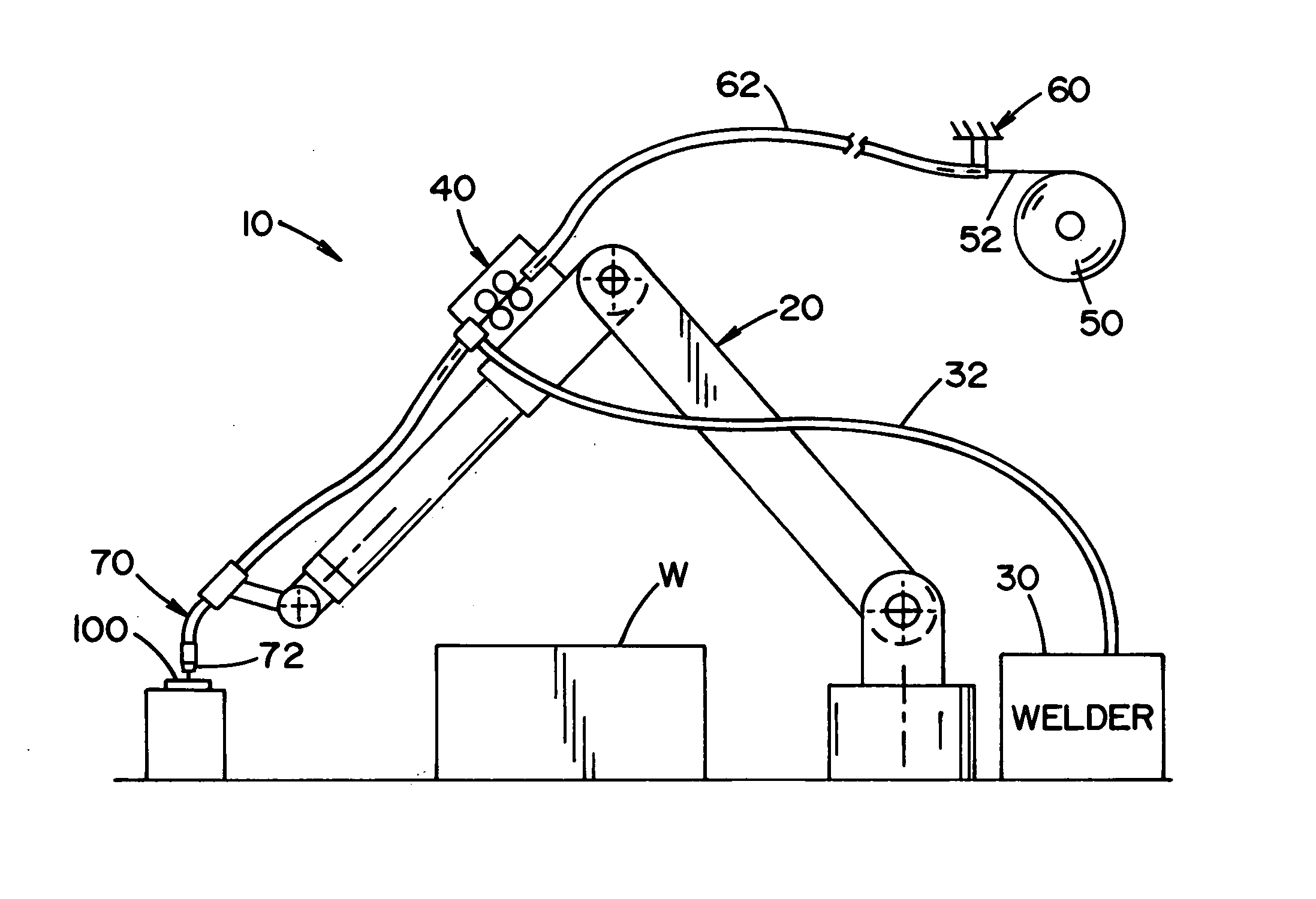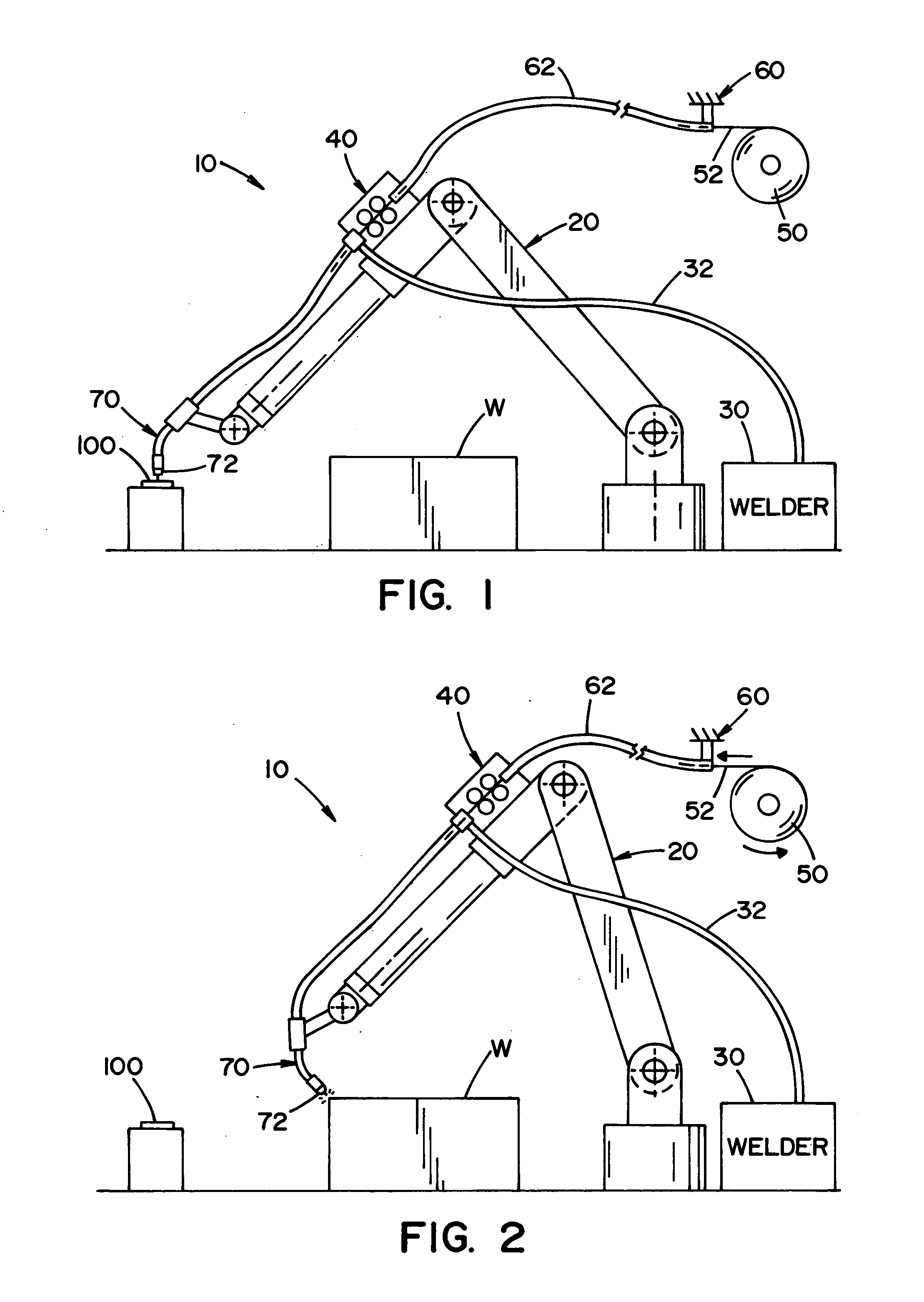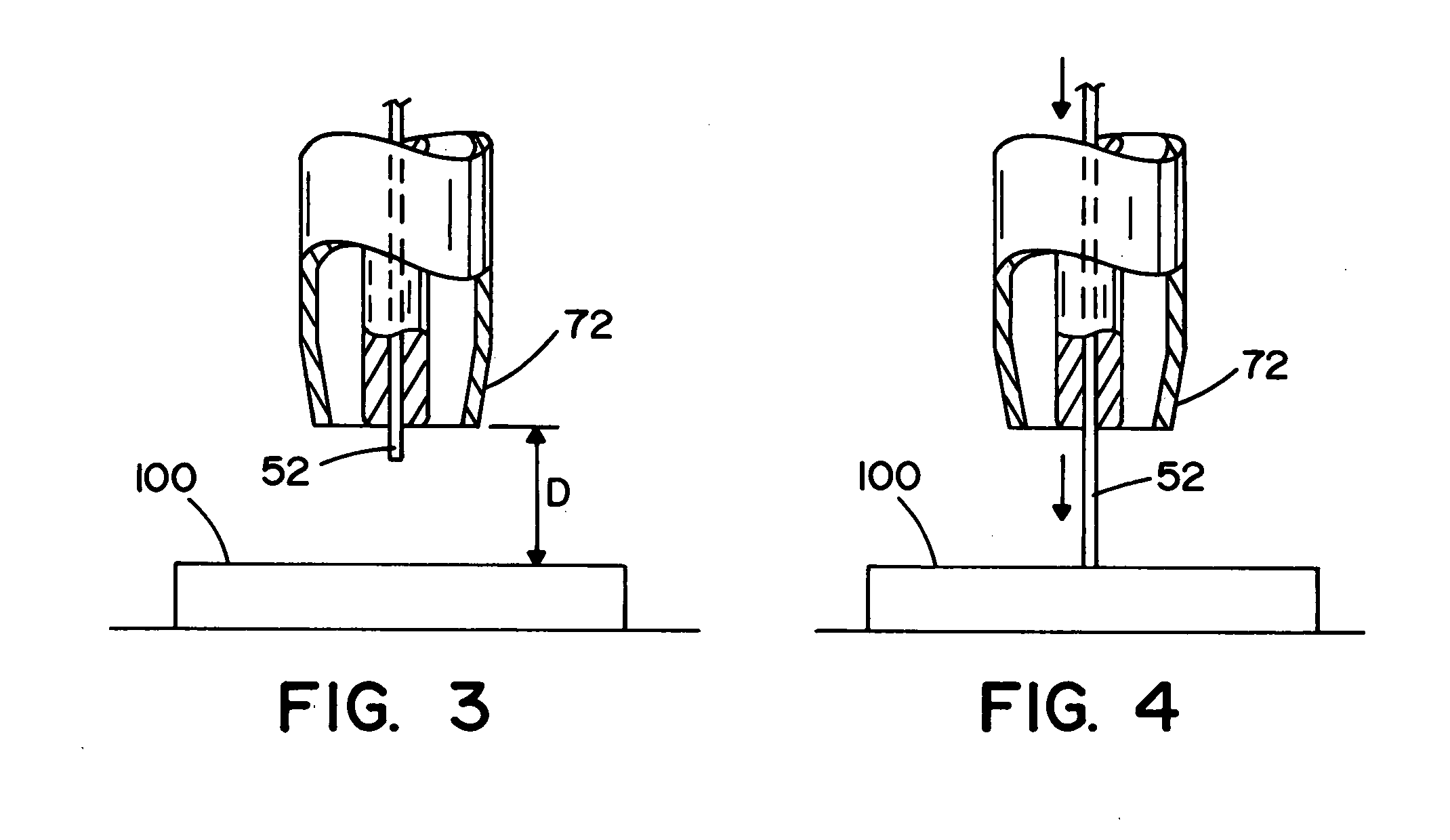Thread control for welding wire
a technology of thread control and welding wire, which is applied in the direction of welding accessories, welding apparatus, manufacturing tools, etc., can solve the problems of electrode sticking out, low quality weld bead initial formation, and difficulty in achieving quality control during the initial formation of weld bead, so as to facilitate the diagnostic and/or calibration functions of welders, facilitate inventory control and/or monitoring of welding wires, and reduce human error
- Summary
- Abstract
- Description
- Claims
- Application Information
AI Technical Summary
Benefits of technology
Problems solved by technology
Method used
Image
Examples
Embodiment Construction
[0031] Referring now to the drawings, wherein the drawings are for the purpose of illustrating the preferred embodiments of the invention only and not for the purpose of limiting the same, FIGS. 1-4 illustrate a robotic welder system 10 that includes a robotic arm 20, a welding power source 30, a robot control 40, a welding wire reel 50 that includes a source of welding wire 52, and a wire feeder 60. The robotic welding system can include other components such as, but not limited to, shield gas source, an external monitoring and / or control interface, etc. The robotic welding system is particularly applicable for MIG welding, pulsed MIG welding, and MAG welding for high output and / or industrial welding environments such as those more commonly encountered in various types of manufacturing facilities; however, it will be appreciated, that the welding system can be used in other types of welding operations.
[0032] The robot control 40 is designed to control the movement of the welding a...
PUM
| Property | Measurement | Unit |
|---|---|---|
| Feed rate | aaaaa | aaaaa |
| Speed | aaaaa | aaaaa |
| Distance | aaaaa | aaaaa |
Abstract
Description
Claims
Application Information
 Login to View More
Login to View More - R&D
- Intellectual Property
- Life Sciences
- Materials
- Tech Scout
- Unparalleled Data Quality
- Higher Quality Content
- 60% Fewer Hallucinations
Browse by: Latest US Patents, China's latest patents, Technical Efficacy Thesaurus, Application Domain, Technology Topic, Popular Technical Reports.
© 2025 PatSnap. All rights reserved.Legal|Privacy policy|Modern Slavery Act Transparency Statement|Sitemap|About US| Contact US: help@patsnap.com



